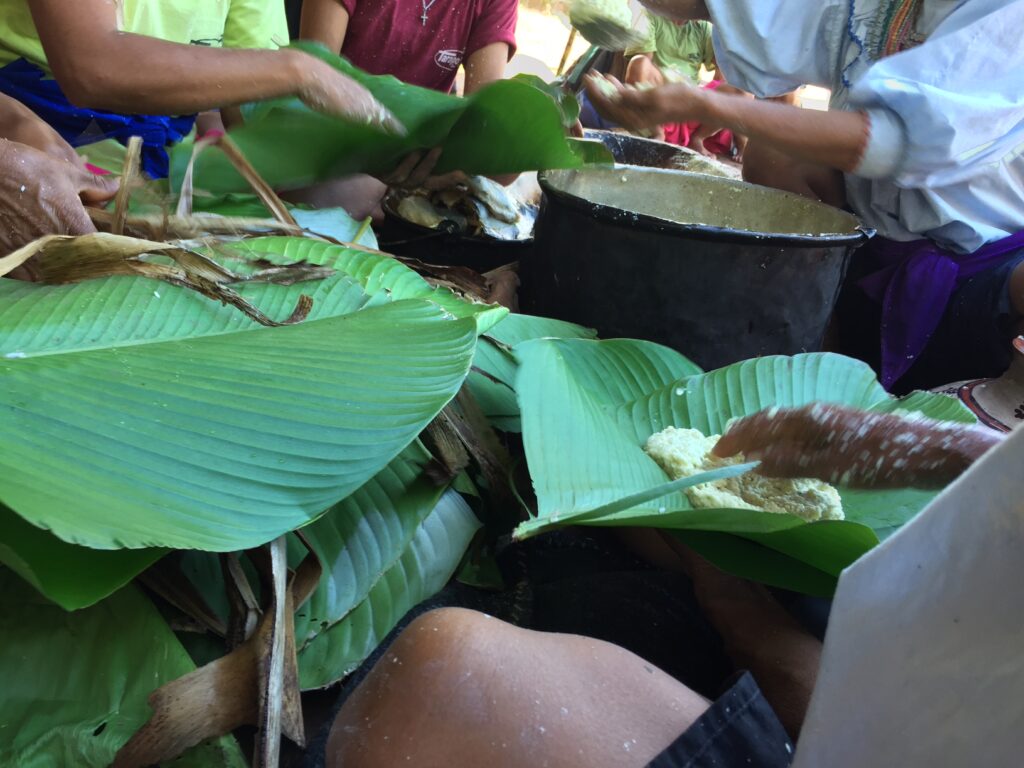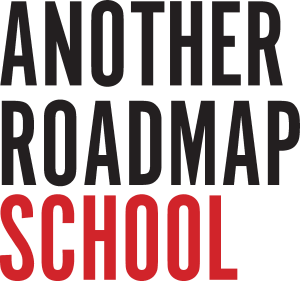
WORKING GROUPS: QUITO, CUERNAVACA
AUTHOR: ALEJANDRO CEVALLOS
ABSTRACT
The work itinerary that we propose in this learning unit consists of materials, texts, images and personal anecdotes that Sofía Olascoaga[1] and I gathered on a visit we made to WAMAN WASI, a center of cultural affirmation and recovery of Amazonian Andean peasant technologies in Lamas Peru. The questions we asked at the time were: How does the community self-government work? What is understood by education or creativity in Amazonian Andean communities? Could their knowledge interact with our knowledge and practices as artists or educators?
Of course, during our visit to Waman Wasi, our hosts did not try to answer our questions through debates or dissertations, instead they invited us to walk through their communities and their forests, we ate together, and we knitted together. At night we would meet to talk about what we were feeling and thinking.
After this experience, we carefully read the “subplots” in our mediation work with indigenous communities in San Roque market and in our embroidery workshop in Quito. The narratives made by the communities “from within” were, of course, part of a fight over their memories and their right to territory against the eviction process in Quito’s downtown, but they also showed us a radical difference in how they understood and made sense of the world. They showed us dialogues with entities of nature, connections between present life stories and practices, knowledge and ancestral memories. They confronted us with our own ignorance as popular educators.
The text “Re-thinking Freire” by Grimaldo Rengifo,[2] one of the promoters of Waman Wasi, showed us in a critical way the relationships between popular educators, radical educators and Andean-Amazonian communities, highlighting the lack of recognition of their epistemological differences when establishing relations of dialogue and envisioning social transformations.
Here are some exercises that we propose for a potential workshop. These exercises are meant to share our experience and observations made in the process, the objective is to find together the meaning that this could have in your own work context. We aspire to contribute by recognizing dominant discourses that are embodied in our educational practices and to identify the challenges that the possibility of knowledge exchange in multicultural contexts implies.
[1] Sofia Olascoaga conceptualized and managed the visit to Waman Wasi in Lamas Peru as part of the educational programming of the Bienal de Sao Paulo ” Incerteza Viva ” in the year 2016.
[2] I refer to the text by Rengifo Grimaldo (2001) Rengifo Grimaldo (2001) “Nurturance in the Andes” In Re-thinking Freire: globalization and the environmental crisis / edited by CABowers, Frédério Apffel-Marglin. LAWRENCE ERLBAUM ASSOCIATES, PUBLISHERS. Mahwah, New Jersy London. Available in English at Art Education Research # 15, 2019, https://blog.zhdk.ch/iaejournal/category/aer15_texte/
→ DOWNLOAD THE LEARNING UNIT IN PDF (ENGLISH)
– DESCARGAR LA UNIDAD DE APRENDIZAJE PDF (CASTELLANO)
→ DOWNLOAD THE INTERVIEW WITH GRIMALDO RENGIFO VÁSQUEZ: CRIANZA OR THE ART OF NURTURING
→ ADDITIONAL RESOURCE: ¿PARA QUÉ SIRVE ESTÁ PLANTITA? (CASTELLANO)
The download is free of charge. Please note you need to be logged in to access the PDF.
We would very much appreciate your feedback. Please share with us in the comments below your experiences of working with this Learning Unit, as well as your thoughts, concerns and questions. The authors will do their best to get back to you and continue the conversation. Thank you!
FOLLOW THE PATH THIS LEARNING UNIT IS CONNECTED TO:

